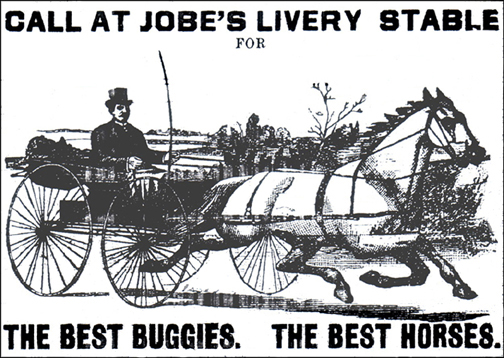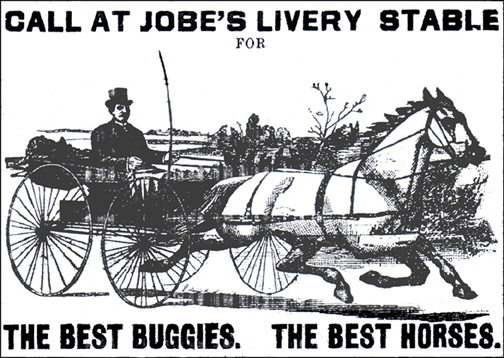The July 5, 1888 edition of The Comet newspaper contained a bold headline: “Promptly at 8 o’clock last Friday night, the electricity was turned on for the first time and for Johnson City, night turned to day.”

The announcement was the fulfillment of work that began in April of that same year. Businessman H.H. Corson, representing the Thomas-Houston Electric Company of Boston, was responsible for the momentous happening. He sold stock in an electric plant that ultimately produced the first electricity supplied to the city. Power became available to Johnson Citians 24 hours a day, 7 days a week.
The Comet further stated, “The private arc light at Jobe’s Livery Stable was the first to light and remain burning and therefore attracted the largest crowd. All the stores in the city have agreed to take lights and are being wired as fast as possible.”
A 1905 advertisement from the files of the old East Tennessee Light and Power Company reveals what appears to be a trade show showing a family of five cooking on a Hotpoint super electric range that featured adjustable electric heat. The unit contained four burners with three of them having heat control. The power cost was just $20 a month. Another ad dated 1915 showed the cost had dropped to $12 per month for average family cooking.”
Between 1912 and 1945, Johnson City was supplied with hydroelectric light and power by the Tennessee Eastern Electric Company, located 42 miles from the city on the Nolachucky River with a local office situated at 100 N. Roan. The plant had a capacity of 5,000 kilowatts produced by two units. The company also maintained an 1100-kilowatt steam reserve plant in the city.
Power consumption rates were based on a graduated usage scale of eight, seven and six cents per kilowatt-hour. Manufacturing plants were given a sizable cost advantage with charges as low as three-fourths of a cent per kilowatt-hour when purchased in specified quantities.
Prior to 1930, a large water wheel costing $1500 supplied electricity to three farmers on Knob Creek Road offering each family a minimum charge of $6 per month for lighting that produced little more visibility than the old traditional old kerosene lamps.
For many years, city residents, but not those dwelling in rural areas, enjoyed the advantages of electrical service. The latter did not have the conveniences afforded them, thus they labored much in the same manner as their forebears, rising in the morning with the roosters and retiring at night with the chickens. Lighting for them came from kerosene lanterns and a stove fueled by wood or coal.
The scenario changed dramatically in May 1935 when President Roosevelt signed an executive order creating the Rural Electrification Administration, aimed at bringing electric power to rural America. Getting power lines to these outlying houses took time. Anxious customers watched progress as poles edged closer to their farms with each passing day until that joyous occasion when a power connection could be made.
In 1945, the Tennessee Valley Authority (TVA) purchased the Tennessee Eastern Electric Company. Johnson City then organized its own electric company known as the Johnson City Power Board and purchased power from TVA.
Today, a drive to a higher elevation in Johnson City at night dazzlingly and luminously reveals how technology has advanced significantly in the past 121 years since that light bulb lit up on a summer night at Jobe’s Livery Stable.
